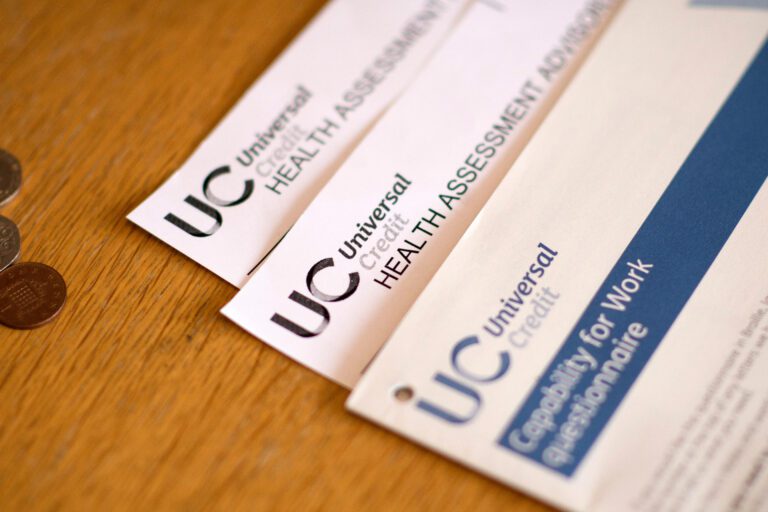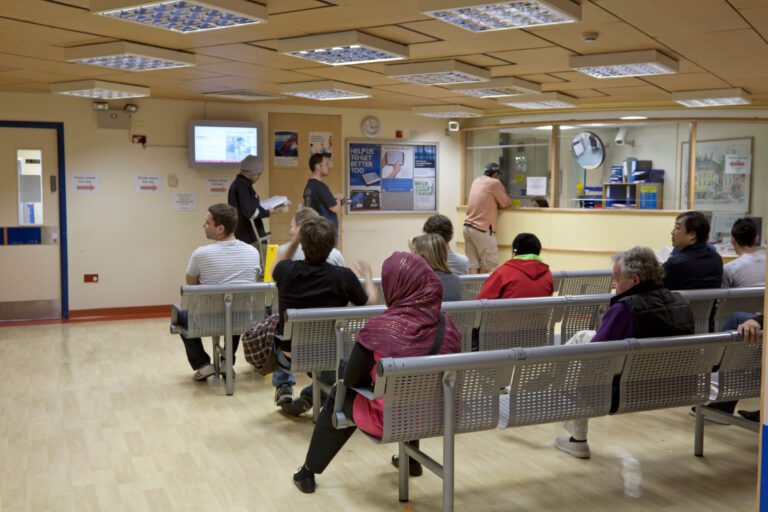Authors
Acknowledgements
This briefing was authored by Nigel Edwards and Robert Ede. They would like to thank Helen Buckingham, Matt Custance, Richard Darch, Mark Dayan, Sally Gainsbury and Sean Phillips who provided input and feedback.
Key Points
|
Introduction
This briefing assesses capital investment in the NHS in England. Capital spending is used to construct facilities and buildings such as new hospitals or GP surgeries, to purchase and maintain equipment and IT, and to fund R&D. The UK is an international outlier in having very low levels of capital spending on health. This has been worsened by raids on capital budgets to shore up revenue. Between 2014-2019, that amounted to over £4 billion.12The Health Foundation. Failing to capitalise. March 2019 [Link] However, there are two reasons for optimism:
- A positive outcome at Spending Review 2021. The Department of Health and Social Care’s capital departmental expenditure limit will rise to £11.2bn by 2024-25.13HM Treasury. Autumn Budget and Spending Review 2021. 27 October 2021 [Link] It is important that this funding is protected.
- The 48 new hospitals manifesto pledge. This demonstrates that the Government recognises the importance of capital spending and is committed to improving the estate.
This briefing sets out ideas for accelerating delivery against the manifesto pledge, which is off-track. Beyond the 48 new hospitals there are multiple capital requirements across the NHS. A lack of investment in capital is undermining the delivery of political priorities and a contributory factor towards the most pressing performance issues. A&E and ambulance waits are exacerbated by a lack of rehabilitation facilities patients can be discharged to; the elective waiting list has been worsened because outdated buildings and services combined on the same sites, where winter and covid-19 surges more likely to disrupt and delay planned care; almost a third of GP surgeries are unfit to meet the needs of person-centred care.14Sir Robert Naylor, NHS Property and Estates: Why the estate matters for patients. March 2017 [Link] Whilst the UK has world-leading capability in life sciences, a lack of laboratory and research facilities holds us back. Furthermore, capital is often overlooked as a source of ‘factor substitution’ where investment in new digital technologies can reduce workforce needs, thereby saving money in the area of biggest spend for the NHS.
Requests for capital will significantly exceed funding supply. We have therefore identified several areas which could deliver the biggest impact for taxpayers, whilst supporting the Government’s reform priorities.
What would a strategic approach to capital look like?
A new approach is needed to address the recurring problem of failing to spend the capital allocation. The following areas need attention:
- Reduce bureaucracy in approvals. Despite commitments to improve it, the approvals process remains a bureaucratic tangle. Unnecessary layers of scrutiny are effectively a rationing mechanism disguised as an approval process. Radical action is needed to cut through this to enable the development of ‘umbrella business cases’ or strategic capital investment plans, allowing quasi-automatic approval for schemes that meet pre-agreed criteria. This should be accompanied by efforts to devolve approval responsibilities for smaller capital schemes to Integrated Care Boards (ICBs).
- Ringfence capital budgets. There has been speculation that capital budgets may be trimmed or deferred as part of the upcoming Autumn Statement.15The Financial Times. Spectre of return to austerity raises alarm in Whitehall. 29 September 2022 [Link] This would be a misstep, locking the NHS into inefficient and dated processes. HMG should give confidence to industry that the pipeline will be there and, as far as possible, protect the capital budget.
- Take a ‘whole public estate’ approach. The development of infrastructure and capital investment plans by the new ICBs should allow them to make better use of land across local government and health, mobilise resources behind their strategies, and to identify opportunities for land sales or cost reduction (across primary and secondary care). This will speed up approvals where business cases align with these plans. ICSs must be clear about prioritisation if this is to work.
- Win the argument on the value of capital. The New Hospital Programme does not yet have a full programme budget approved, a project scope or timeline.16NHS England Board meeting. New Hospital Programme Update. 6 October 2022 [Link] It is important that HMT mistrust of DHSC capital plans is challenged, otherwise the scarcity of NHS capital will continue. This should initiate a conversation about the profile of the programme – is the priority to have hoardings up and shovels in the ground across 48 sites with the risk that only a minority of sites are operational by 2030? Would a more aggressive prioritisation process deliver better returns?
Making it happen
The principles above should be applied both to the cornerstone 48 new hospitals pledge, and to certain other key projects with a high impact on performance and improvement which should be prioritised as DHSC finalises its Capital Strategy.
New hospitals
Delays to the 40/48 new hospitals programme have been well-publicised. The new Prime Minister and Health and Social Care Secretary should ask: “What will make the programme go faster?” and prioritise accordingly. This is likely to mean less focus on developing NHS bespoke solutions to procurement. There are tried and tested design and construction procurement routes adopted across government and familiar to the construction industry. Using those would engage industry and accelerate projects. There is a significant market of UK expertise in hospital design and construction; this needs to be harnessed to deliver the programme. Skills need to be developed – both nationally and locally – so the NHS can become an ‘intelligent client’ to ensure any procurement framework adopted delivers good taxpayer return. The development of expert in-house resource nationally and aligning local teams is needed. Health infrastructure development cannot be wholly centralised. There are two key lessons which should be front of mind for decision makers:
- Be selective with standardisation. Whilst there is an intellectual attractiveness in standardisation, focusing on this above other important design elements may hold things back. Savings from standardisation can be achieved more quickly by a focus on standardisation at the level of departments, rooms, and individual components. Ensuring quality is important, but there is a risk of pursuing perfection at the expense of progress.
- Focus where need is greatest. Backlog maintenance is now valued at over £10 billion – half representing a serious risk to safety and effective operation.17NHS Digital. Estates returns Information Collection. 13 October 2022 [Link] The hospitals with the greatest problems with Reinforced Autoclaved Aerated Concrete (RAAC) planks should be brought into the programme urgently. There is a persuasive argument to make modifications to the NHP, applying a prioritisation framework for all major projects (in the region of £100m+). For smaller projects (sub £100m) responsibility should sit with ICBs.
Taken together, this would enable a more strategic focus on replacing, replenishing, and refurbishing the NHS estate in a consistent way.
Other capital investment to target key areas of concern
In addition to hospital estates, targeted investment now can enable later transformation, driving economic growth and efficiency improvement.
- Pursue a ‘hub’ model. Develop capacity in elective surgery and diagnostics away from emergency sites to improve productivity and protect capacity from emergency pressures.
- Focus on intermediate care and rehabilitation. Significant investment in intermediate care and rehabilitation could be a low-cost way of emptying hospital beds, reducing ambulance waits and bringing in additional capacity at a significantly lower cost per m2 than an acute hospital and with lower operating costs. NHS England is already looking at this area.18Health Service Journal. NHSE plans 24-hour target for new hospital discharge service. 12 October 2022 [Link]
- Improve digital infrastructure & tackle ‘technical debt’. Deploying digital systems across health and social care will improve flow, support efficient operations as well as supporting staff in managing the transfer of care.
- New ownership models for the primary care estate. Estates have been identified in multiple reviews as a barrier to transformation in general practice.19NHS England. Next steps for integrating primary care: Fuller stocktake report. 26 May 2022 [Link]; Health and Social Care The future of general practice: Fourth Report of Session 2022–23. 11 October 2022 [Link] Most GP partners retain ownership for premises (both an incentive and disincentive to taking up partnership). We could choose to follow Scotland, where there is no longer the presumption that GPs own their own premises.
- Boost productivity through effective estate development. The pandemic revealed staff facilities are too often an afterthought, posing challenges for infection control and efficiency, and contributing to ill-health. Laboratory (and other relevant spaces to support clinical research) would deliver economic multiplier effects.
Sources of finance
The rise in the cost of gilts will impact on the appetite for further government borrowing to fund infrastructure. There are two viable and underexplored alternative sources of capital.
- Independent sector-run facilities. The independent sector could be used to accelerate capital and infrastructure investment where analysis demonstrates its competitiveness. Opportunities exist in private planned surgery hubs (located proximally to main hospital sites), diagnostic centres, and rehabilitation and intermediate care.
- Learn from what works. Circle Health have developed a rehab facility in Birmingham – offering a possible model which could be replicated elsewhere.20Circle Health Group. Circle Rehabilitation, Birmingham [Link]
- Adequately fund different investment models. This approach may require additional initial revenue, as NHS funded activity delivered by the private sector is funded through revenue for services, rather than capital. To encourage private sector providers to invest in facilities which can address problems with waiting and in emergency care, additional funding is likely to be required in the short to medium term. A guarantee of this revenue would bring in private capital investment at scale.
- Mature relationships and approaches. This should be regarded as an opportunity to develop greater maturity in DHSC and NHS approaches to procurement and contracting.
-
Disposals. The 2017 Naylor Review identified £2.7bn in possible capital receipts that could be derived from selling off inefficiently used land and property.3 This was modelled to be much higher if planning regulations were made more permissive. However, progress since 2017 has stalled due to a lack of necessary incentives for providers.
The recent Growth Plan included further incentives, permitting the NHS to carry forward 100% of the proceeds from land sales into future years.21HM Treasury. The Growth Plan 2022. September 2022 [Link] This is to be welcomed; however, two issues remain. Firstly, ongoing uncertainty within the real estate market may erode appetite for disposals. Secondly, there is also an important geographical dimension, given the concentration of the potential land value of the NHS estate within London and the Greater South East. There are a small number of sites with high asset value. One option would be to consider a form of sharing scheme around capital receipts that would allow a portion of the total release (e.g., one third) to be returned centrally for redistribution.22Policy Exchange. What do we want from the new Prime Minister on Health and Social Care? 22 August 2022 [Link] This would need to be designed with care. The initial focus should be on a small number of sites with high asset value. It has been estimated that 57% of the total national financial opportunity for releases sits within 13% of the surplus land.23Sir Robert Naylor, NHS Property and Estates: Why the estate matters for patients. March 2017 [Link] A properly constituted national team could maximise returns on these disposals by assisting with planning/value uplift.






